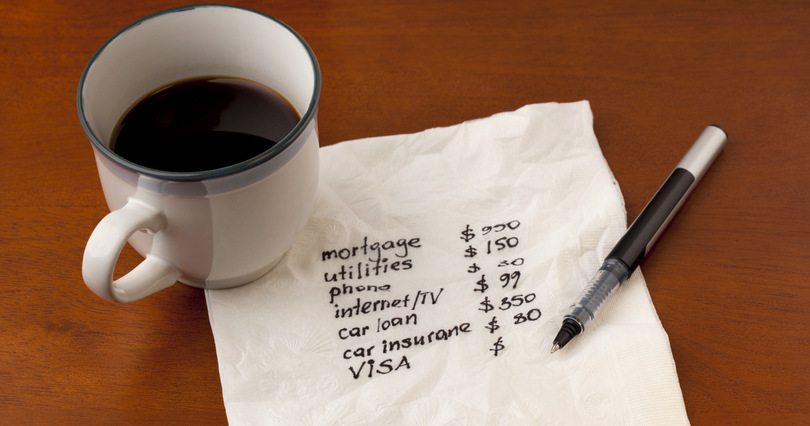What is a Household Budget and How to make One

Do you find yourself searching in all your shirt pockets for money at the end of the month?
Do you keep away money in pillow covers and sari folds so that it would come handy at the time of need?
Do you stall buying essentials until the beginning of the following month?
Are you rationing your child’s diapers towards the end of the month?
Do you need multiple reminders to pay your child’s school fees?
Do you recycle gifts in the fear of extra expense?
If the answer to any of the above is yes, this article is for you.
Elements of a good budget
We all know that Income and expenses are the elements of a budget. But there are multiple facets of Income and expenses. More often than not, we do a quick math saying that this is the salary I get to take home at the end of the month and this is the expenses that I have. Period. But a good budget extends beyond this. Let us now look at the categories of income and expenses.
Regular Income and expenses
This category would include the regular inflow and outflow of cash in a given month. Most of our day-to-day expenses will be covered by this category.
Periodic Income and expenses
This is where you would categorize periodic but not regular income and expenses. Typical examples would be your insurance that is payable once or twice a year or a child’s school fees that is payable in 2 or 3 installments. When we talk about income, you could think about a bonus payout or an interest arising out of a fixed deposit or an annuity.
Wishlist expenses
Now, don’t try to run a google search on this term. It is my creation. It is typically a term that is very popular in my house. We draw up a list of things that we would want to have or like to do. Whether it is that international holiday or that LED TV, it all finds place in this list. Then we put up a cost associated with each item and try to pool it out of our savings.
Windfall expenses
This category would include any unforeseen expenses that you might incur. It could be an expense on account of banging your car or could be an expense out of an illness. With an MRI costing over ten grand, there are bound to be expenses that are unforeseen and not covered by insurances.
Savings
For most of us, this term means a surplus of income over expenses. But it is important to make allowances for other expenses out of your savings. Also, savings could be utilized for short-term investments, medium-term investments or long-term investments.
Drawing up the budget
Drawing a home budget is fairly easy if you know how to go about it.
Step 1: Categorizing
Firstly, you would need to categorize all your expenses and incomes under Regular and periodic.
Step 2: Estimating
Once you have done that, you will have to start estimating your income and expenses in chronological order. Meaning, you will have to list down all the expenses by month. Your regular income and expenses will be a monthly feature in any case. However, you will have to include your periodic expenses in the month that it belongs to.
Step 3: Allocating
Next you will have to allocate the expenses in a broader category. A few groupings are listed below:
1. Household expenses
- Groceries
- Toiletries
- Veggies
- Short eats
- Gas
- Milk
- Telephone
- Mobile
- Internet and Cable charges
2. EMIs
- House
- Car
- Personal loans
- Credit card loans
3. Travel Charges
- Petrol
- Bus / Auto charges
- Other travel charges
4. Rents and taxes
- House rents
- Property taxes
- Income tax (Not to be included if you are considering take home in income)
- Insurance (Life, Health, Vehicle, Accident etc)
5. Health and grooming
- Doctor charges
- Medicines
- Gym subscriptions
- Parlor and Spa
6. Children expenses
- School fees
- Tuition fees
- Art / Sport classes
- Diapers and other charges
- Baby food
7. Entertainment
- Outing expenses
- Movies
- Shopping
- Gifts
- Cigarettes / Alcohol etc
8. Other expenses
Step 4: Matching
Now, that we have all the incomes and expenses in place, we will need to match them and figure out what will be the excess or deficit. This exercise will help us understand which month will be the most difficult and will help us plan accordingly
Few tips to help along the way
Tip #1
I usually like to categorize my savings as under:
- Long-term investment – This would be the savings that I do not intend to touch for at least a period of 7-10 years
- Wishlist savings – This would typically be the short-term investments that I would like to keep aside for things that I always wanted to
- Contingency funds – This is the amount that I would keep aside for unforeseen expenses.
- Second Income corpus – This amount would create a corpus for investing towards a second source of Income. (See article on Second source of Income)
Tip #2
Try to identify the pain months and plan for them. My daughter’s school fees is payable twice a year, once in May and again in October. Since I know that beforehand, I would stagger this payment and pull out regular installments until I get that corpus. Let us say her school fee is Rs. 70,000 payable in equal installments.
Rather than pay Rs. 35,000 in one month, I would put about Rs. 3,000 per month in Fixed Deposit. Then I would tweak my budget to reflect this as the school fees.
Tip #3
I would try to receive my periodic incomes in the month where I have some periodic expenses. Let us say I need to pay an insurance of Rs. 25,000 per year in January. And let us say I receive Fixed Deposit interests of Rs. 15,000 in November, I would realign this income in such a way that I receive this in January so that it can help me pay the insurance.
Tip #4
It is very important to monitor your Contingency Fund. You might want to reconsider your insurances and the expenses considering the inflation factor. You can use the balance towards any other investments like real estate / retirement fund / Second source of Income etc.
Tip #5
Credit card expenses should be broken down to get a realistic picture of the spending. This will be an exercise every month, but will be worth the effort.
Maintaining the budget
Now that we have the entire categorization ready, you just need to dock your actual against the respective heads. This is very important as this will give you an idea whether your budget is adequate or not.
Sample
A sample budget is being provided here . Please click on the link to download a sample budget. You can change it as per your requirements.
It is very important to keep your finances under control. Keeping an eye on your finances will give you the confidence about your spending power and will also give you confidence to plan for any future events. So, keep budgeting and keep your finances under control.









Leave a Reply